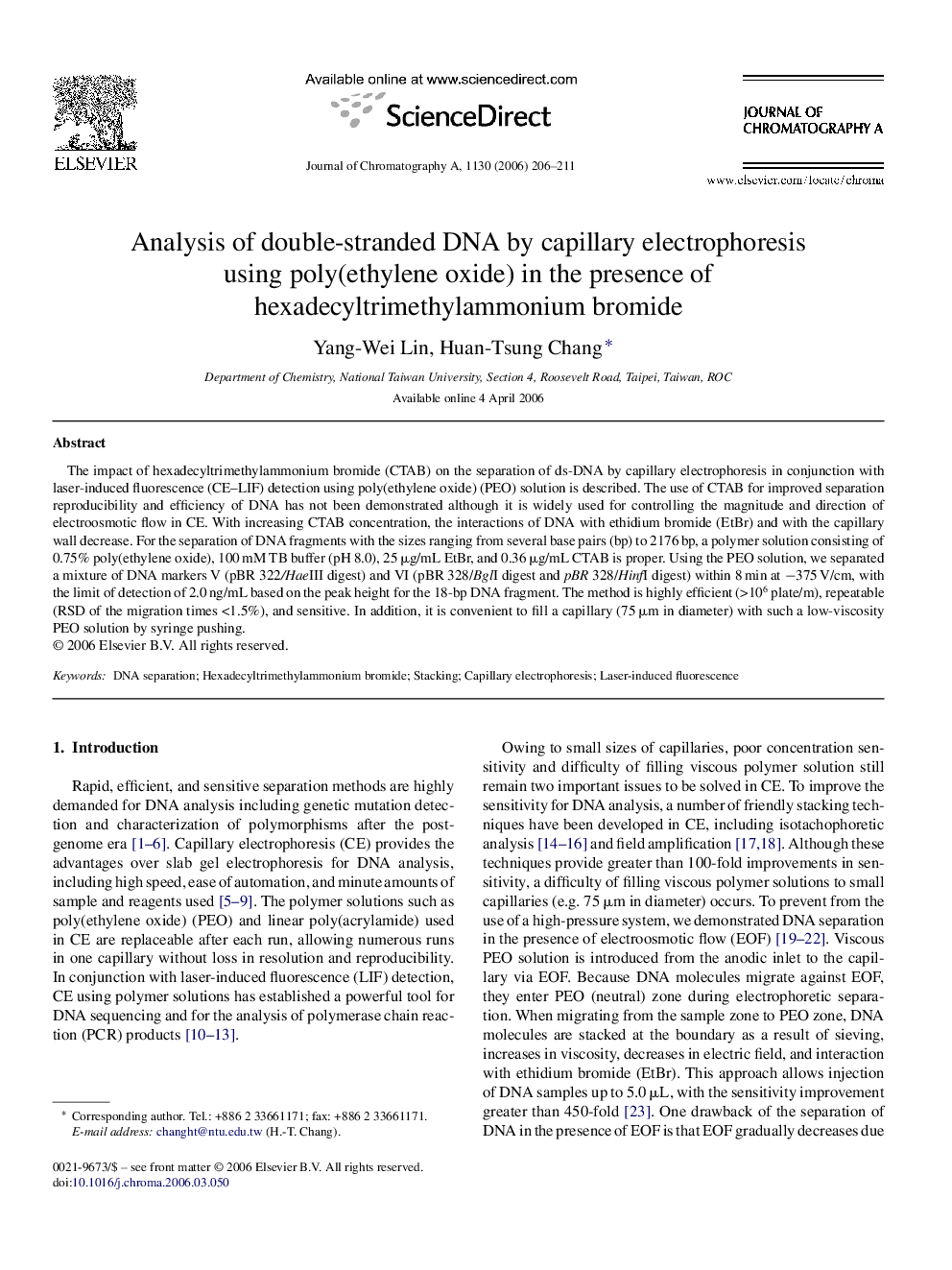| Article ID | Journal | Published Year | Pages | File Type |
|---|---|---|---|---|
| 1209775 | Journal of Chromatography A | 2006 | 6 Pages |
Abstract
The impact of hexadecyltrimethylammonium bromide (CTAB) on the separation of ds-DNA by capillary electrophoresis in conjunction with laser-induced fluorescence (CE-LIF) detection using poly(ethylene oxide) (PEO) solution is described. The use of CTAB for improved separation reproducibility and efficiency of DNA has not been demonstrated although it is widely used for controlling the magnitude and direction of electroosmotic flow in CE. With increasing CTAB concentration, the interactions of DNA with ethidium bromide (EtBr) and with the capillary wall decrease. For the separation of DNA fragments with the sizes ranging from several base pairs (bp) to 2176 bp, a polymer solution consisting of 0.75% poly(ethylene oxide), 100 mM TB buffer (pH 8.0), 25 μg/mL EtBr, and 0.36 μg/mL CTAB is proper. Using the PEO solution, we separated a mixture of DNA markers V (pBR 322/HaeIII digest) and VI (pBR 328/BglI digest and pBR 328/HinfI digest) within 8 min at â375 V/cm, with the limit of detection of 2.0 ng/mL based on the peak height for the 18-bp DNA fragment. The method is highly efficient (>106 plate/m), repeatable (RSD of the migration times <1.5%), and sensitive. In addition, it is convenient to fill a capillary (75 μm in diameter) with such a low-viscosity PEO solution by syringe pushing.
Keywords
Related Topics
Physical Sciences and Engineering
Chemistry
Analytical Chemistry
Authors
Yang-Wei Lin, Huan-Tsung Chang,
